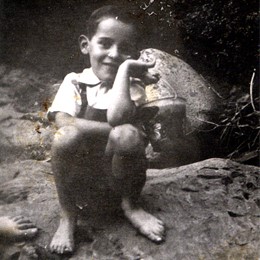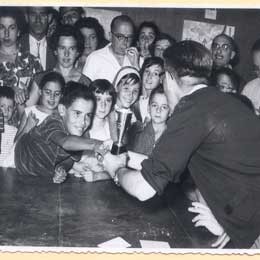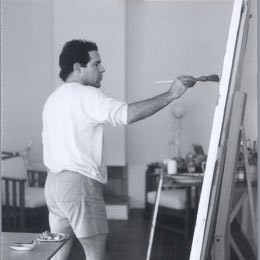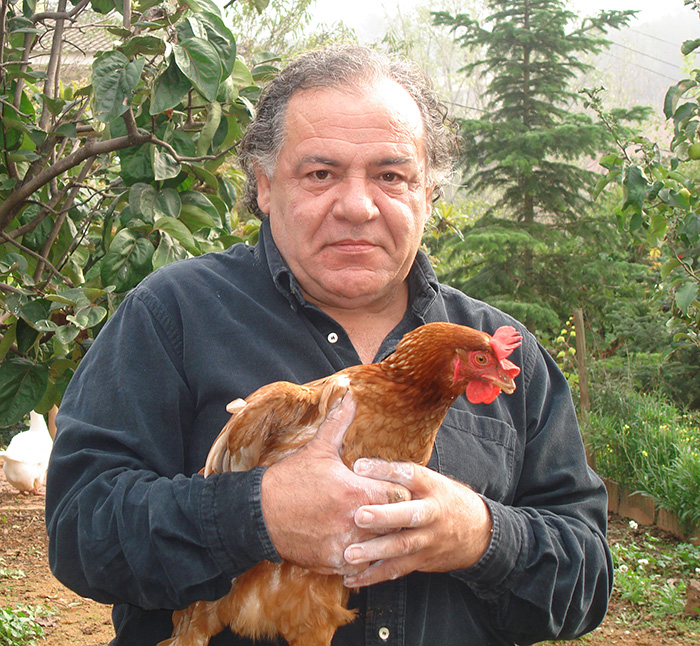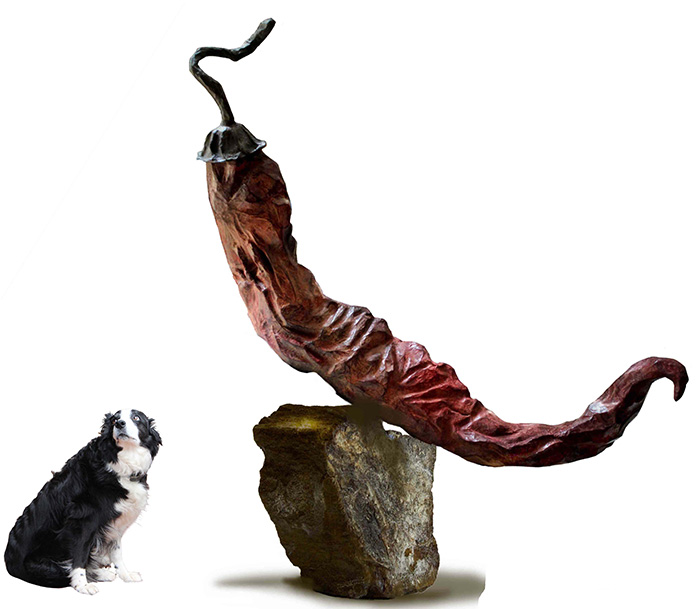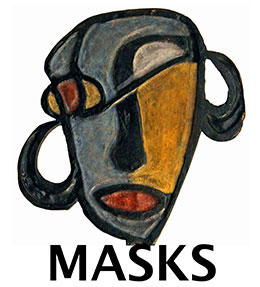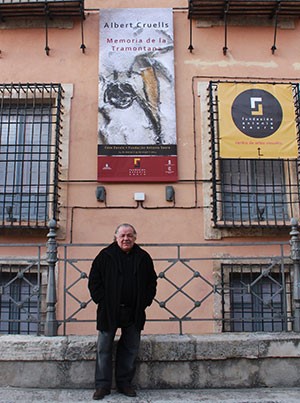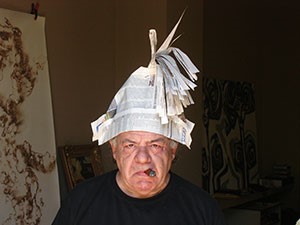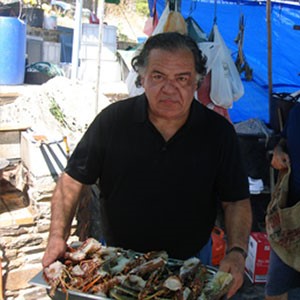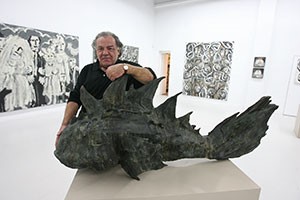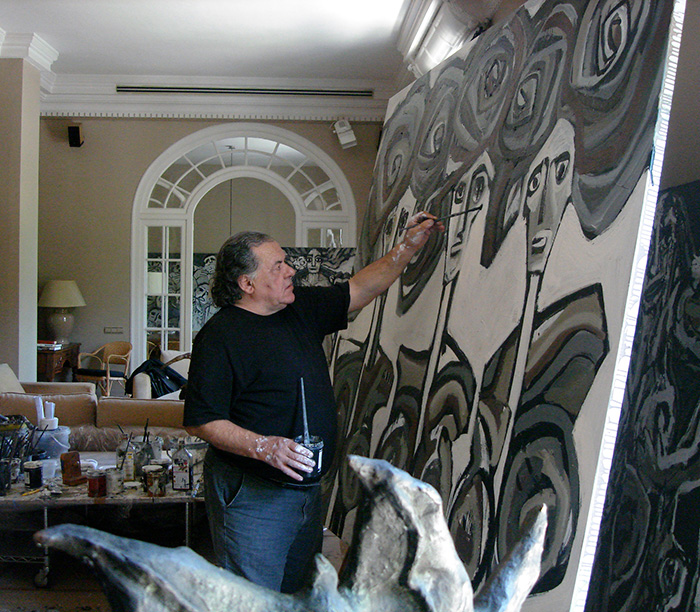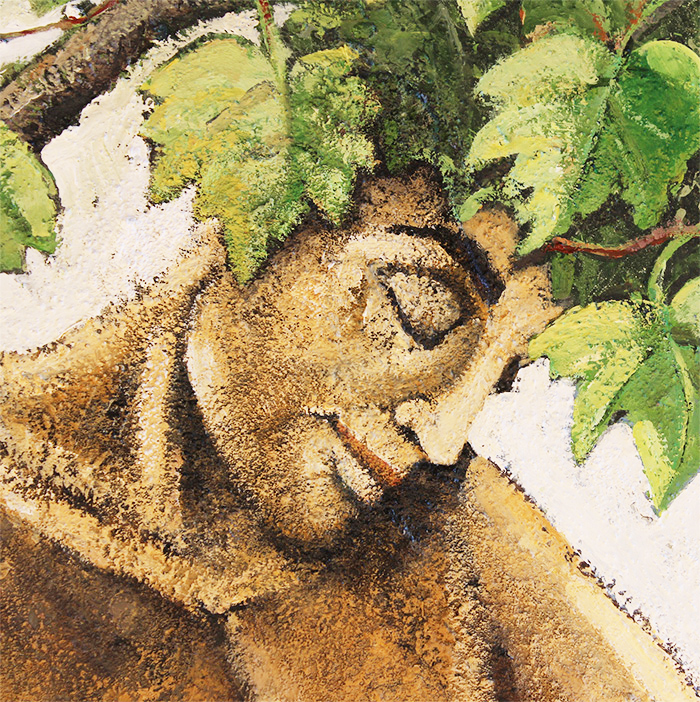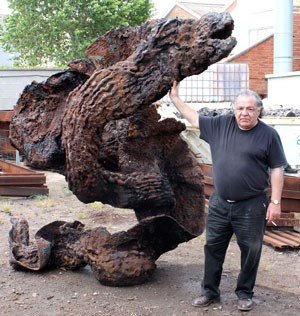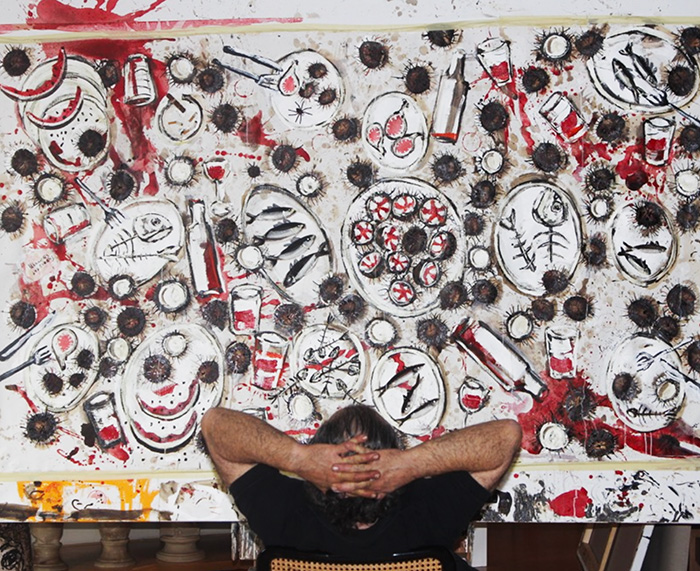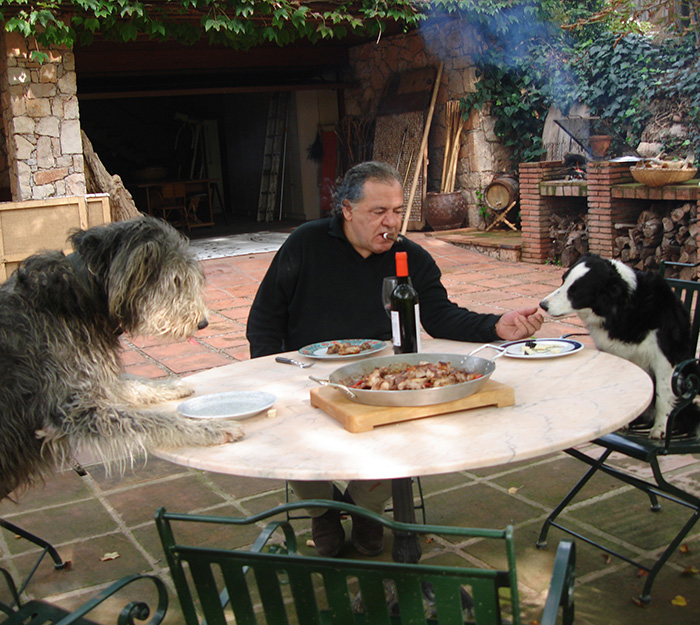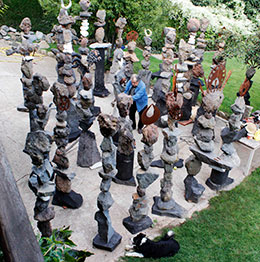Albert Cruells. Barcelona. 1947. September 11th
"We’re basically like chickpeas absorbing the flavour of the stew they’re being cooked in.
Such conclusions can only be reached in the depths of solitude, the cradle of humility".
Albert Cruells was born in Aiguafreda (Barcelona), in the province of Barcelona, on 11 September 1947; his mother was a piano teacher and his father was never without a book.
He spent his early years surrounded by chickens, rabbits, goats, lambs, tomatoes, onions and lettuces.
He had his first exhibition at the age of six, in his grandfather’s butcher’s shop.
"The source of creativity for every human being is childhood. I was a wild child glued to a paintbrush surrounded by animals and with the sea in the background. I don't think my trajectory has changed much."
Cruells grew up in the postwar years in Spain—spiritually impoverished years overshadowed by grotesque religious and military pomp and dressed up with folksy flourishes, bullfighters and black-and-white films censored by psychopaths.
Unsettled and disturbed by this environment, Cruells found his natural refuge in art and stayed there.
His time at the School of Architecture was an unmitigated failure.
The only subject he passed—indeed, excelled at—was drawing.
In the 1970s, Cruells discovered the world of art and culture in a restless, bustling Barcelona that was enjoying its recently regained freedoms.
He soon got to know the cast-iron rules that govern the art business.
"When art is at the mercy of trends and the whims of fashion, it becomes a refuge for the incompetent, the mediocre and the cheaters ."
Cruells resolves to keep his work tightly under his own control—a decision he has stuck to his whole life.
Until 2009, he kept everything he created well away from the art market.
"The history of art is the history of power. Everything else is either eaten or comes to an end. Not art."
Outwardly extrovert, inquisitive and full of life, Cruells is a recluse at heart.
With only his dogs for company, he shuts himself away with his work, pursuing the inescapable goal of being true to his instinct.
"If we forget our animal nature, we’ll lose ourselves in the minutiae of metaphysics.
And we’ll all go mad."
When he reached forty, his wild, deliberately eclectic output gave way to a painful period of biting work. His pieces became more reflective, exorcising ghosts from his adolescence that had previously been hidden away in a corner of his soul.
Prints of saints next to calendars of busty girls. Priests and showgirls, virgins and prostitutes. Cats and dogs.
Sex, food, life and death, lies and truths—they all fitted naturally into his work.
Cruells was certainly brutal with his work during this period, until he brought this chapter in his life to a close.
Well aware of the ephemeral nature of existence, Cruells has never been one for frittering away his time on trivialities or mundane thoughts.
"Art is the only necessity that is utterly useless"Perhaps that’s why he’s not one of those artists who trumpet their triumphs. Quite the opposite: his obsession with simplification and synthesis keeps him constantly excited, in a state of permanent conflict.
" Life happens in the brain and manifests itself on the face. and as life is drawn, the face becomes a grimace, a mask."
In 2010 Cruells opened up to the outside world. He had a show in Barcelona and published an overview of his hitherto utterly unknown work.
The Vila Casas Foundation acquires some of his works.
In 2012 he exhibited work in Bologna, Banca de la Emilia Romagna and Galería Bon Giovanni. In 2014 the Fundación Antonio Saura ran a major show on him to coincide with the publication of a book on his latest pieces.
Over time, Cruells’ work has become more playful, extrovert, organic, physical, unclassifiable and, above all, unashamedly Mediterranean.
"Mine is the Mediterranean of spit-covered floors and laments, of corners that stink of the piss of cheap wine.Of mangy dogs lazing about on the steps of empty churches. Of cemeteries full of straggling briars.The Mediterranean of inscrutable, saltpetre-worn eyes. The florid, baroque Mediterranean. Crooked, old, stale. A sea of pirates, prostitutes and philosophers.The father and mother of all seas."
Now his generous hands spread material over canvases. He has a sure touch. The former violence in his brushstrokes has been replaced by a decisive approach, well-earned maturity, the regained innocence of a childhood warmed by a box of bright colouring pencils.
Meanwhile Cruells contnues playing, moving forward and back to advance again along new paths. Cruells is an artist and he can't help but do it.
At this time Cruells entered the world of sculpture. It is recreated in an extensive collection about its flagship fish, the scorpion. Large bronze pieces that one can see in different public places susch as Tamariu or Cadaqués.
He also made an interesting collection of bronze portrait masks, patinated in impossible colors.
In 2014 he created "The Barcelona Collection", composed of thirty-one large-format sculptures, in basalt, under the subtitle of "Totems, milestones, myths and rites".
Manuel Medarde - The Gaudi Research Institute.
Exquisite Brutality
Cruells recreates legends by distilling Mediterranean culture, a way of being and thinking that has had a decisive influence on Western civilisation through two key texts: the Odyssey and the Iliad.
Like a contemporary echo of Parnassus, Cruells constructs his own totems, legends, landmarks and rites with an almost childlike simplicity, a return to the beginning of time.
Gaudí said that originality is going back to the start. Exactly what Cruells does.
Alessandro Allemandi - The Art Newspaper
Inspired Creativity
The history of art is made up of “silent” artists whose work takes on an independent life away from its creator (Joan Miró, for example) and “speaking” artists (such as Salvador Dalí) whose work cannot be fully appreciated without a grasp of its creator’s personality—and actually often forms part of it. Albert Cruells shares both facets: his paintings and sculptures speak for themselves, but their creator’s personality helps explain their genesis, praxis and fate.
This new collection of totemic sculptures is a display of creativity that really has to be seen firsthand to be enjoyed in full and to remind us, once again, of one of Albert Cruells’ own aphorisms: “Art is the only indispensable thing that is entirely useless.”
Miguel López - Director de la Fundación Antonio Saura
Albert Cruells’ Telluric Sculptures
Cruell’s work, there’s abstraction, there are ethnic aspects. Many of the pieces are cultural, archaeological and mythological, but above all there is a telluric aspect that defines them more than anything else.
Telluric comes from the Latin tellus ‘earth’, and perhaps even from an Indo-European root meaning ground. In these pieces, Albert practises a form of tellurism; they are bursting with influences of the ground or his homeland.
Albert’s telluric sculptures fit within the contemporary conception of anti-statues. They stand on the ground, tell us things about the earth and are essential, primitive and, above all, timeless.
Albert Cruells is blessed with that marvellous madness that makes him a great artist. Creative freedom and an irresistible urge to explore, take risks and open himself up.
